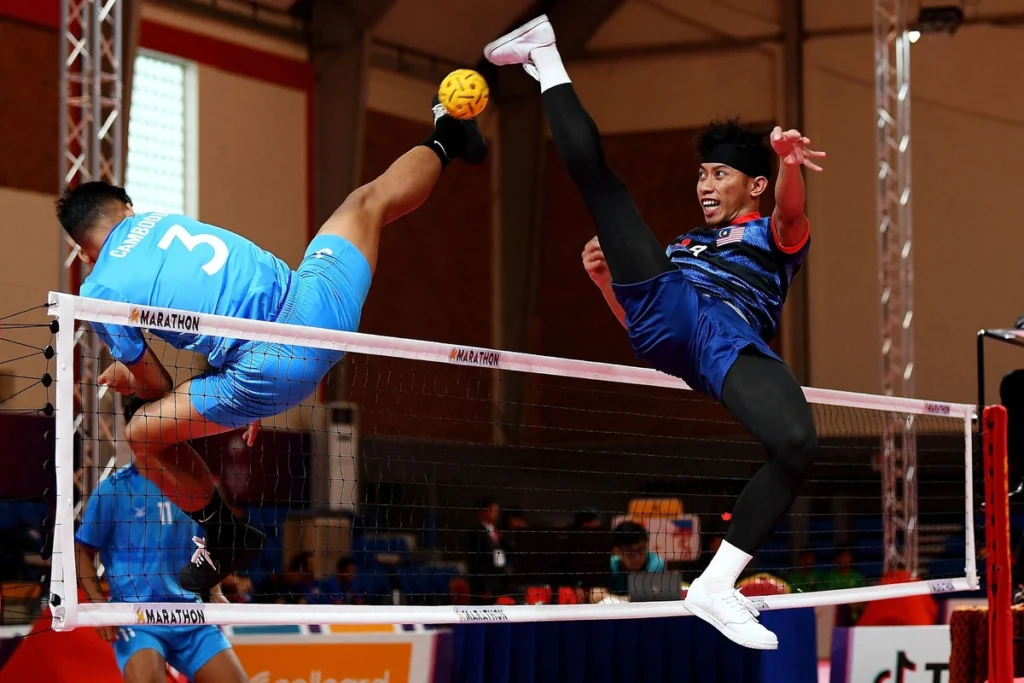In North America, most people recognize soccer as a major sport. In Latin America, however, it is known as fútbol in Spanish and futebol in Portuguese, terms that directly translate to “football” in English. In Southeast Asia, particularly in Malaysia and Thailand, a related sport called Sepak Takraw is popular. It resembles volleyball and pickleball but is played using only the feet; no hand contact is allowed.
Sepak Takraw emerged in the 1960s as an integrated sport between Thailand and Malaysia. The term Sepak is a Malay word meaning “kick,” while Takraw is a Thai word that refers to a “woven ball made of rattan,” a vine-like tropical plant. The game is typically played with two or three players per team, and athletes use their feet, knees, chest and head to send the ball over a net similar in height to a badminton net.
The sport can best be described as a blend of football, volleyball and martial arts, with rules that resemble pickleball. Sepak Takraw became an international sport in 1988 and now features 32 competing nations, with Thailand dominating most competitions. The most recent major event took place in early 2025 in India, where 21 countries, including the United States, participated in the ISTAF World Cup.
The rules are straightforward. A team wins a set by scoring 21 points, and matches are played in a best-of-three format. Players must score without using their arms or hands, and each team is allowed only three touches before the ball must be sent over the net; exceeding this limit results in a fault.
A related sport in Cambodia, known as Tort Sey, shares similar origins. Tort means “to kick,” and sey means “shuttlecock,” translating to “kick the shuttlecock.” Tort Sey has been played for centuries and eventually developed into what is now recognized internationally as Sepak Takraw. Historically, the game served as a way to keep children engaged and safe before school, offering physical activity while keeping them away from busy streets.

